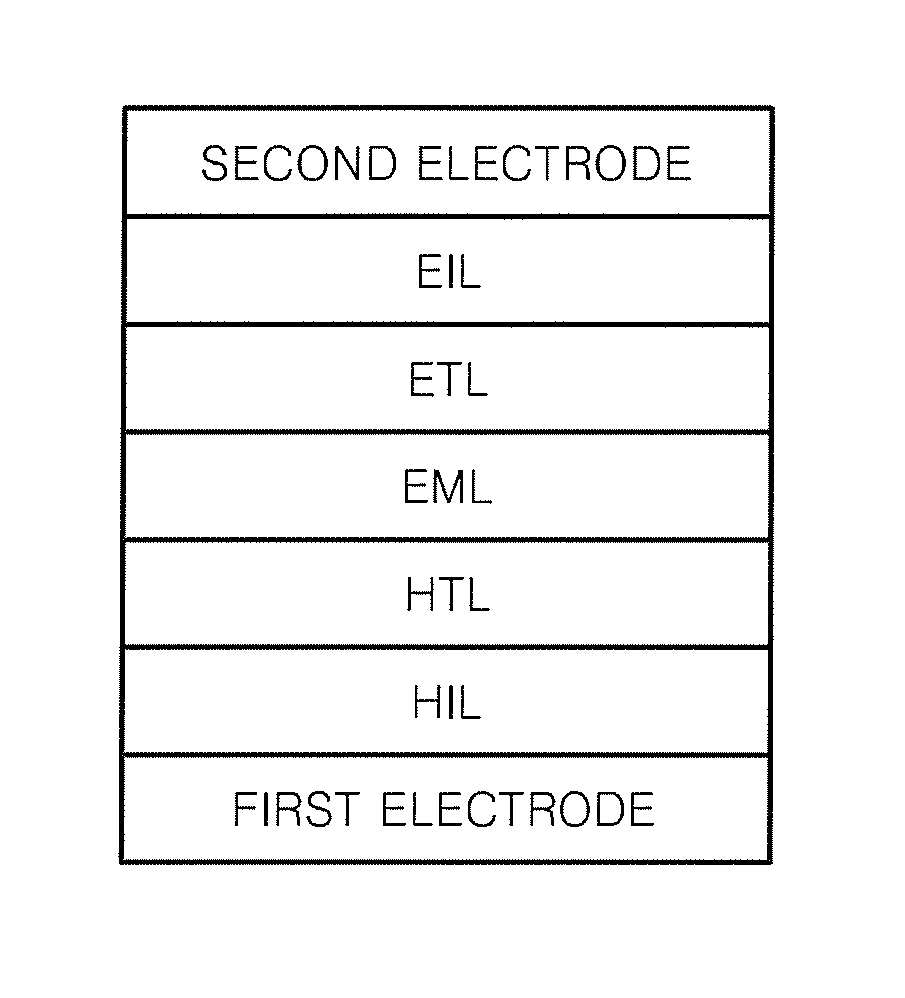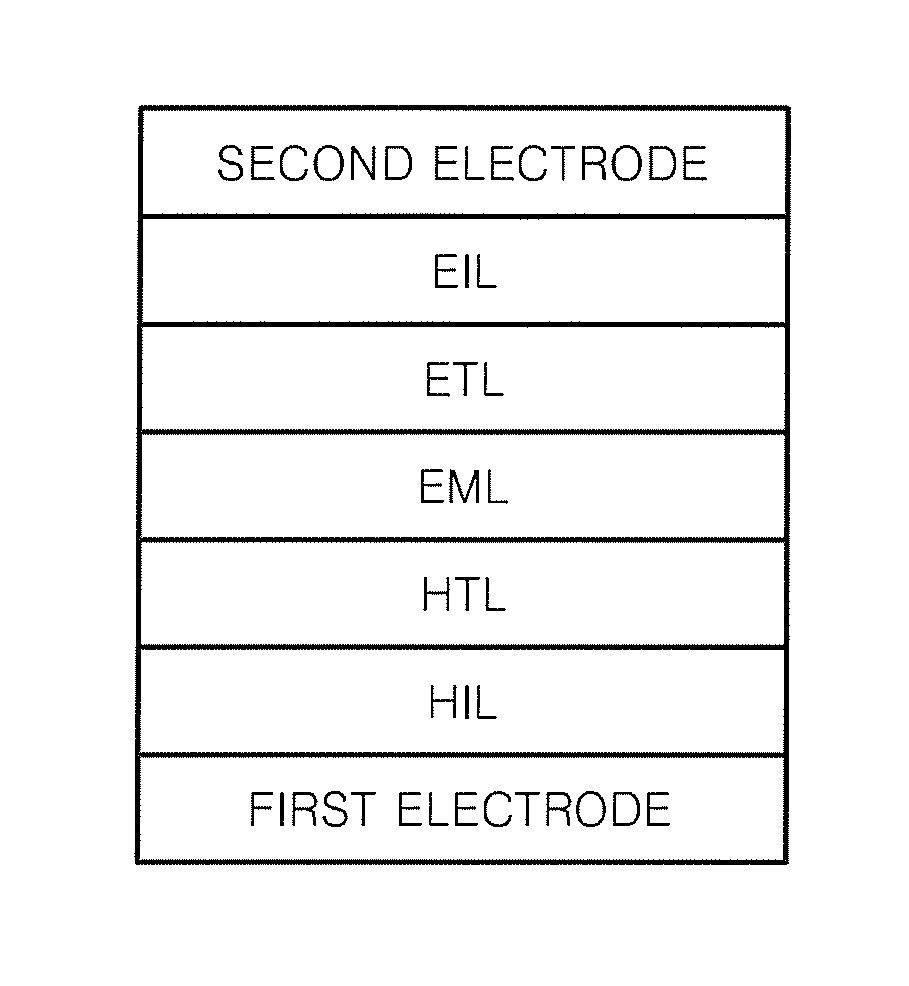Organic light-emitting compound and organic light-emitting device including the same
a technology of organic light-emitting devices and compounds, which is applied in the direction of organic semiconductor devices, organic chemistry, natural mineral layered products, etc., can solve the problems of poor thermal stability of glass transition devices, high driving voltages, and significantly higher current efficiency, so as to improve luminescent efficiency and lifetime.
- Summary
- Abstract
- Description
- Claims
- Application Information
AI Technical Summary
Benefits of technology
Problems solved by technology
Method used
Image
Examples
example 1
[0240]To manufacture an anode, a corning 15 Ω / cm2 (500 Å) ITO glass substrate was cut to a size of 50 mm×50 mm×0.5 mm and then sonicated in isopropyl alcohol and pure water each for 10 minutes, and then cleaned by irradiation with ultraviolet rays for 10 minutes and exposure to ozone. The resulting glass substrate was loaded into a vacuum deposition device.
[0241]Then, 2-TNATA, which is a HIL material, was vacuum-deposited on the glass substrate to form a HIL having a thickness of about 600 Å. Then, 4,4′-bis[N-(1-naphthyl)-N-phenylamino]biphenyl (NPB), which is a hole transporting compound, was vacuum-deposited on the HIL to form a HTL having a thickness of about 300 Å.
[0242]
[0243]Then, a green fluorescent host Ir(PPy)3 and Compound 1 were deposited at the same time in a weight ratio of 13:87 on the HTL, to form an EML with a thickness of 300 Å. Next, Alq3 was deposited on the EML to form an ETL having a thickness of about 300 Å, and Al was deposited to a thickness of 1200 Å to form ...
example 2
[0245]An organic light-emitting device was manufactured in the same manner as in Example 1, except that Compound 5 instead of Compound 1 was used to form the EML.
[0246]The organic light-emitting device had a driving voltage of 4.2V at a current density of 5.9 mA / cm2, a high luminosity of 3500 cd / m2, color coordinates of (0.32, 0.63), and a luminescent efficiency of 58.9 cd / A.
example 3
[0247]An organic light-emitting device was manufactured in the same manner as in Example 1, except that Compound 8 instead of Compound 1 was used to form the EML.
[0248]The organic light-emitting device had a driving voltage of 4.0V at a current density of 5.9 mA / cm2, a high luminosity of 3500 cd / m2, color coordinates of (0.33, 0.63), and a luminescent efficiency of 60.7 cd / A.
PUM
| Property | Measurement | Unit |
|---|---|---|
| pressure | aaaaa | aaaaa |
| temperature | aaaaa | aaaaa |
| temperature | aaaaa | aaaaa |
Abstract
Description
Claims
Application Information
 Login to View More
Login to View More - R&D
- Intellectual Property
- Life Sciences
- Materials
- Tech Scout
- Unparalleled Data Quality
- Higher Quality Content
- 60% Fewer Hallucinations
Browse by: Latest US Patents, China's latest patents, Technical Efficacy Thesaurus, Application Domain, Technology Topic, Popular Technical Reports.
© 2025 PatSnap. All rights reserved.Legal|Privacy policy|Modern Slavery Act Transparency Statement|Sitemap|About US| Contact US: help@patsnap.com



